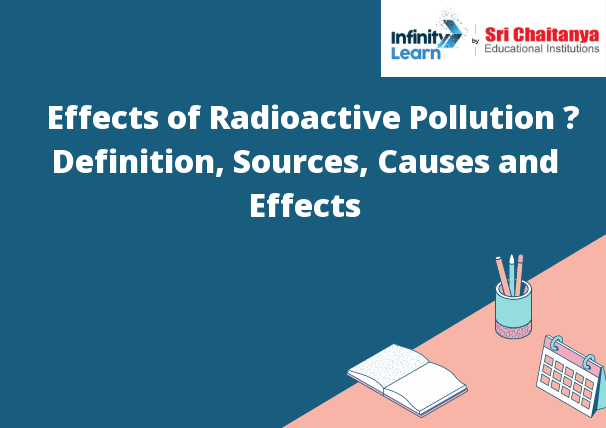Table of Contents
What is Radioactive Pollution?
Radioactive pollution is the presence of radioactive materials in the environment that can cause harm to humans, animals, and plants. Radioactive materials can come from natural sources, such as uranium in the earth’s crust, or they can be man-made, such as the radioactive byproducts of nuclear weapons testing or nuclear power plant accidents. Effects of Radioactive Pollution.

Radioactive contamination, also called radiological pollution, is the deposition of, or presence of radioactive substances on surfaces or within solids, liquids, or gases (including the human body), where their presence is unintended or undesirable (from the International Atomic Energy Agency (IAEA) definition).
Such contamination presents a hazard because the radioactive decay of the contaminants, produces ionizing radiation (namely alpha, beta, gamma rays and free neutrons). The degree of hazard is determined by the concentration of the contaminants, the energy of the radiation being emitted, the type of radiation, and the proximity of the contamination to organs of the body. It is important to be clear that the contamination gives rise to the radiation hazard, and the terms “radiation” and “contamination” are not interchangeable.
The sources of radioactive pollution can be classified into two groups: natural and man-made. Following an atmospheric nuclear weapon discharge or a nuclear reactor containment breach, the air, soil, people, plants, and animals in the vicinity will become contaminated by nuclear fuel and fission products. A spilled vial of radioactive material like uranyl nitrate may contaminate the floor and any rags used to wipe up the spill. Cases of widespread radioactive contamination include the Bikini Atoll, the Rocky Flats Plant in Colorado, the area near the Fukushima Daiichi nuclear disaster, the area near the Chernobyl disaster, and the area near the Mayak disaster.
What are Radioactive Pollutants?
Radioactive pollutants are pollutants that are radioactive. Radioactive pollutants can come from a number of sources, including nuclear accidents, nuclear weapons testing, and the mining and processing of radioactive ores. They can cause a number of health problems, including cancer, birth defects, and genetic damage.
Sources of Radioactive Pollution
There are many sources of radioactive pollution, but the most common sources are nuclear power plants, uranium mining. The use of radioactive materials in medicine, industry, and research.
Causes of Radioactive Pollution
Radioactive pollution is caused by the release of radioactive materials into the environment.
Radioactive pollution can cause a variety of health problems, including cancer and genetic mutations. It can also damage the environment, causing the death of plants and animals.
Effects of Radioactive Pollution
There are a number of adverse effects of radioactive pollution. These include:
Increased risk of cancer
Increased risk of birth defects
Damage to the environment
Damage to human health
Increased risk of genetic defects
How can we Prevent Radioactive Pollution?
There are a few ways to prevent radioactive pollution. One way is to properly store and dispose of radioactive materials. Another way is to use less radioactive materials.
Effects of Radioactive Pollution.





